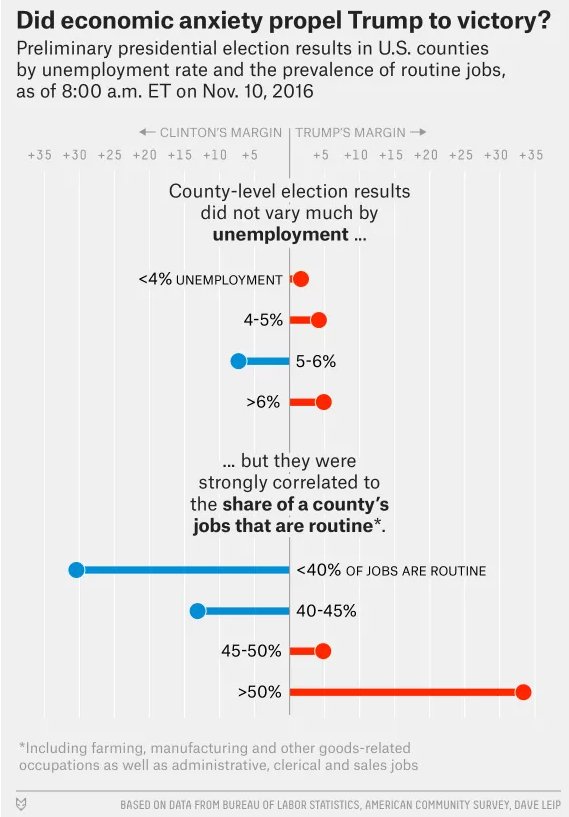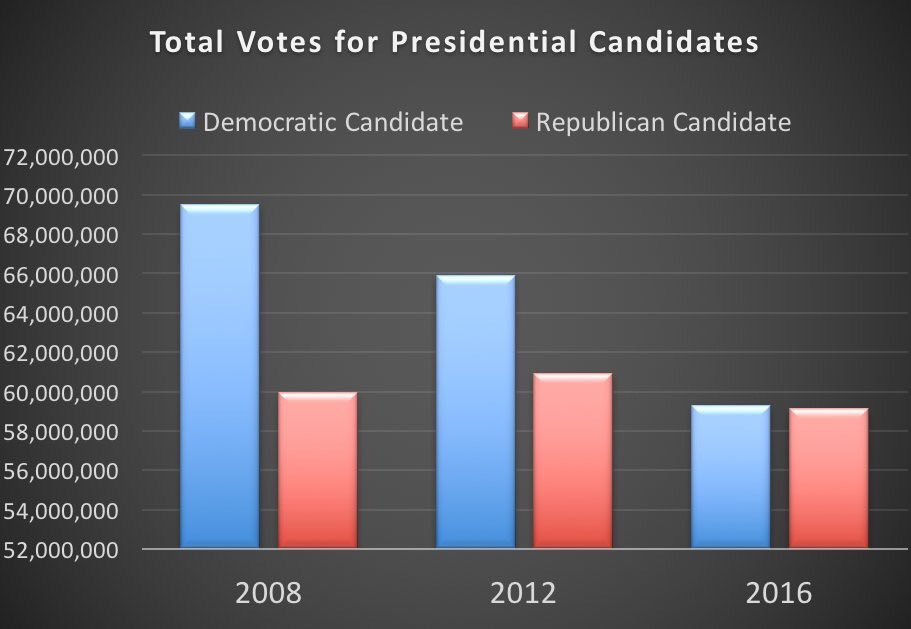Following the election of Donald Trump, there has been a spat of various explanations as to why he has won. Let me synthesize here the various explanations that I have been able to find so far. I find this discussion fascinating not only for scientific reasons, but also because they speak to what seems to be major changes affecting all the western democracies.


- The losers of trade globalization strike back:
white blue collar workers that have been hit by globalization vote for
more protection from foreign workers. The best illustration of this
phenomenon is Branko Milanovic's elephant graph. The middle class in developed countries has seen stagnating incomes since 1988 (and even earlier) and has in consequence radicalized. This explanation seems to have a grain of truth. Recent work by David Autor, David Dorn, Gordon Hanson and Kaveh Majlesi shows that in US counties harboring more industries competing with Chinese exports, workers not only lose their jobs, have lower earnings and are in worse health, but they also tend to vote for more extreme republican candidates.
- The losers of technological change rebel. Erik Bryjlnofsson has tweeted this graph: the vote for Trump seems to be correlated with how much a share of a county's jobs are routine. David Autor, along with various over coauthors, has shown that a huge change in advanced economies has been the progressive disappearance of middle level routine jobs
yielding to a polarization of the job market: only highly skilled tech
jobs or very low skilled service jobs increase in the economy, while
middle level industry and clerk type jobs are replaced by robots and
computers.
- The white majority feels threatened by the rise of the ethnic minorities.
The idea is that the modern welfare state is easier to maintain when
there is ethnic homogeneity. The main reason seems that we are less
generous with people that do not look like us. The increase in the size
of the Hispanic and African-American communities might have triggered a
fear reaction by the white majority that is now trying to protect itself
by restricting access to citizenship or even deporting immigrants.
Recent results for Austria by my IAST colleague and friend Charlotte Cavaillé
seem to give some credit to that explanation. Charlotte and her
coauthors find that natives competing with immigrants for access to
public housing vote more for the far right.
- It's Fox News: Simon Wren-Lewis has a very nice post where he discusses recent evidence on the persuasive impact Fox News has on election outcomes.
- Democrats simply did not turn out for Hillary. David Yanagizawa-Drott has a put together a really nice graph that shows that Hillary has failed to mobilize Democrat voters.
- It's the economy, stupid! It turns out that, back in March, Ray Fair's model was predicting a Republican win.
The explanation comes from the penalty of having two consecutive
Democrat mandates before the actual election and the weak economy. Both
of these factors gave a strong lead to any Republican candidate.
What to make of all that? Explanations 1 to 3 are the most frightening. They suggest that the model of the modern western welfare state is under jeopardy under the combined forces of globalization (trade and migration) and of technical change. These explanations are extremely dispiriting since it seems extremely hard to conjure up solutions to respond to the challenges raised by these changes. I'd love to think that it is only 6!


